WORLD CLASS COACHING
Win With Defensive Pressure
By Luca Bertolini
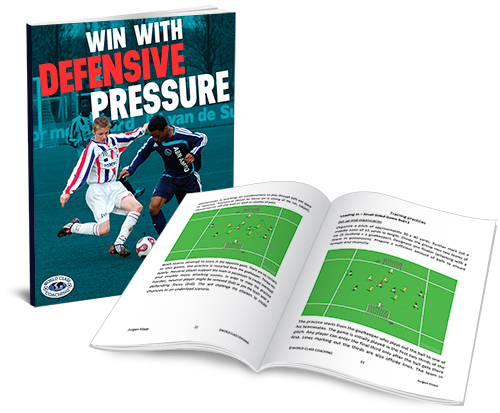
Table of Contents
PART TWO
HIGH AND STRONG 1V1 DEFENSIVE PRESSURE
HOW TO COACH IT
High and Strong 1v1 Defensive Pressure
One of the most important principles of soccer is moving the ball forward by advanced pressing and counter pressing to make the forward passes more difficult.
Vertical passing in the first phase of build-up helps quick forward progression on the field, overcoming the opposition pressure lines, but the receiving player often faces towards their own goal.
The defending players may now think about the potential direction of a pass before it's made, looking at the player’s body or leg positioning and other players. But careful choices must be made: if the first idea is not right, the defenders may have less time to anticipate the forwards or they may move in the wrong direction.
The goal of a 1 v 1 defense should be to press the nearby opponents who could be placed in a suitable position to receive, to limit their reaction speed and timing as well as to limit the decision making of the passing player. The support structure of the attacking team should be unbalanced.
All the defensive schemes in soccer, man marking or zonal marking, will leave a space somewhere on the field; it's important to be sure that these spaces are in the least dangerous area and farthest from the goal area. From this point of view, the 1 v 1 pressure aims to stop the attacking phase of the opposition as soon as possible and as far as possible from the goal.
There are three key principles to successful 1 v 1 defending:
1. Quick Pressure: The player near the ball must “close the space” as quickly as possible as soon as the ball is played to his opponent. Close the space on the opponent as the ball is arriving to the attacker. The defender must:
Intercept the pass
Put pressure on the first touch of the opponent and recover the ball off of a poor first touch.
Contain the attacker, reducing the space to turn or pass
2. Touch Tight Pressure: When closing down space, slow down about 5 yards/meters from the opponent and gradually take away the remaining space in a controlled defensive position.
Make the forward feel uncomfortable
Limit the attacker’s vision of the field
Cut off forward passing lanes
3. Patient Pressure: Most attacking chances are created through poor and impatient defending; the general rules can be:
Don’t dive in
Ready to take the ball when it’s exposed
Tackle on the opponent when ball is exposed
The high pressure and 1 v 1 duels on the goalkeepers can have two main objectives; the first one is to avoid the building from the back of the opposition. In this picture, if the goalkeeper would pass to one teammate out of the penalty area, the receiver would be under pressure immediately.

Here again the same situation; 1 v 1 on the goalkeeper and 1 v 1 just out of it and another attacking player who could press the opponents behind the two first duels.
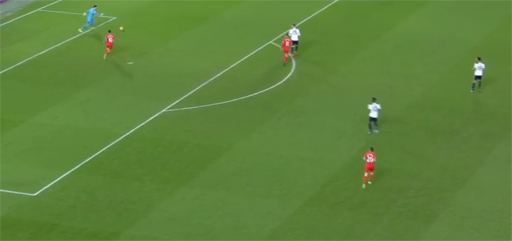
The second one is to recover the ball in the middle third winning the possession after the long kick of the opposition goalkeeper.

Then numerical advantage near the ball is needed to gain possession. In this picture a 2 v 2 duel is played on the ball, but three other players are placed close to the ball area and free to receive.
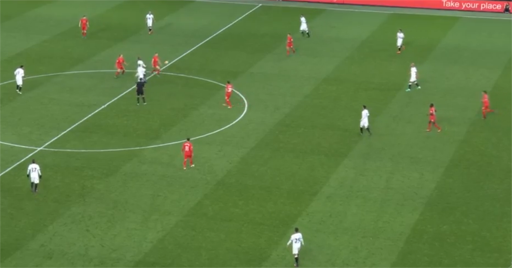
When the team in possession forces the build up from the back phase of play, then the defensive high pressure in the final third becomes useful to prevent forward passes.
This picture is interesting because it shows a 2 v 2 duel with one player who is pressing the opponent in possession and who can close a side forward pass. A third player is placed just out of the duel area again to close forward passes.
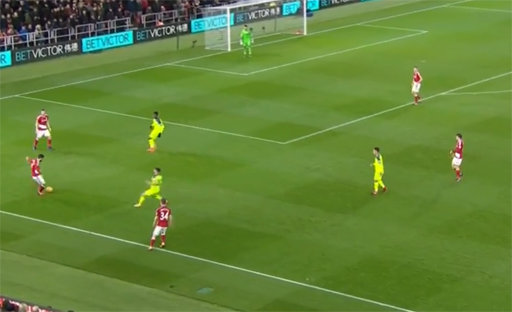
Looking back to Sacchi AC Milan, the principle of play is the same; 1 v 1 duels in the final third and close the forward passes lines.
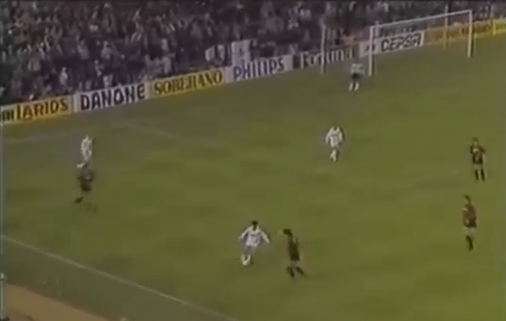
When the first line of pressure is overcome, the first player of the opposition who receives must be under pressure to direct the play backwards or sideways.
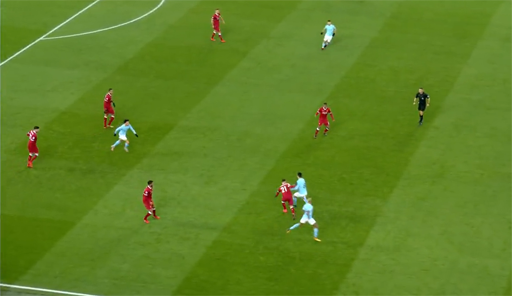
The forwards of the defending team must now close the backward passing line and the midfielder must keep the pressure on the opponent while he's carrying the ball.

All the players in possession have a potential direct opponent who can press him; a 4 v 4 duel is played here; the left fullback is forced to kick the ball forward because of the pressure of the forwards. Two center midfielders are placed just behind them.
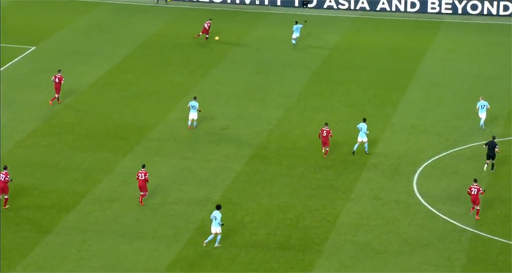
The same midfielders are those who must direct the opposition phase of play backward, inside a general 5 v 5 duel, where a zonal 3 v 3 against the defenders of the possession team is played.
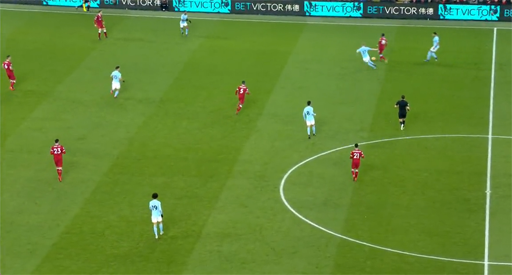
Looking at this situation on the flank, all the players of the team in possession are, or potentially are, under 1 v 1 pressure, as they receive and control the ball. A 4 v 4 general duel can be noticed.
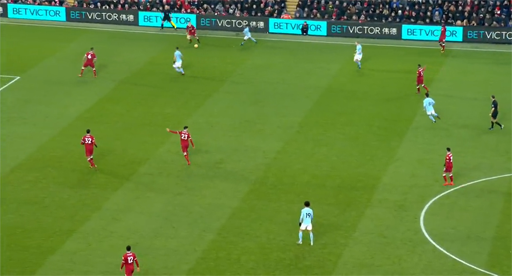
Here again the same situation; 4 v 4 (double 1 v 1) on the flank and the possession phase is sent backward and outward
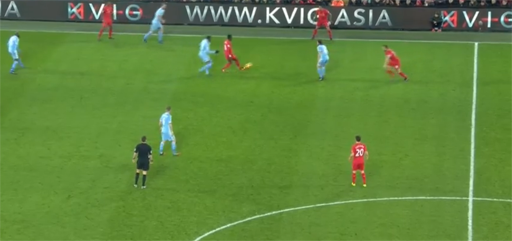
Strong front 1 v 1 on the ball and 1 v 1 duels at the back on the nearest opponents to avoid forward passes and close down the sideline the possession phase.
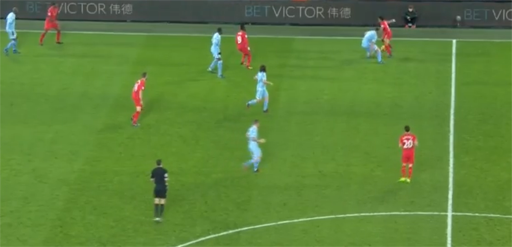
1 v 1 duels to anticipate the opponents near the ball and to force a long pass.
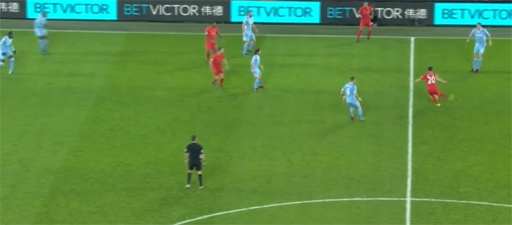
If we look at this picture where the possession team is playing out, it's clear as all the defending team players are running toward the potential direction of pass to press the receiver. A double 1 v 1 has been already played between the left center back and left full back of the possession team and the center forward and the right winger of the defending team.
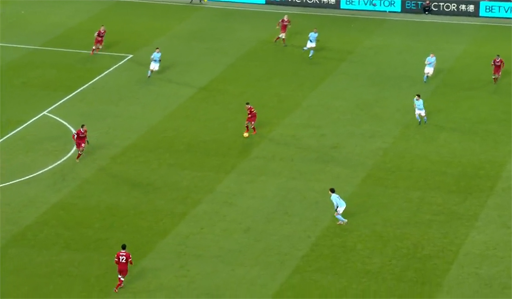
Here again all the defenders and midfielders next to the ball could be under 1 v 1 pressure. A general 5 v 5 can be noticed inside the defense half of the possession team.
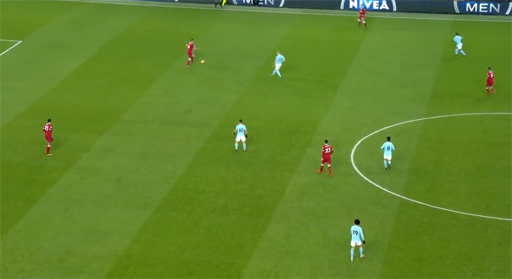
Equal number of players near the ball during the possession phases of the opposition must be recurrent principle of defensive phase when a 1 v 1 pressure tactics is desired,.
A 5 v 5 situation is easily recognizable and the opposite winger of the defending team is ready to be the first player to put pressure on the other side.
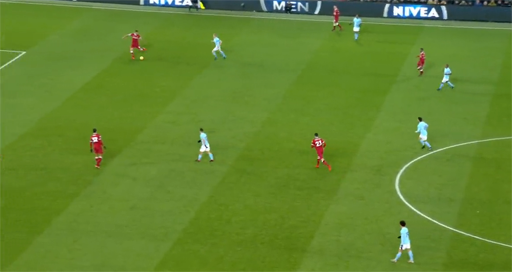
A 3 v 3 is played on the ball (center midfielders 2 v 2 and the center forward vs the center back) and two more players near the playing area ready to replace the teammates if they are beaten.
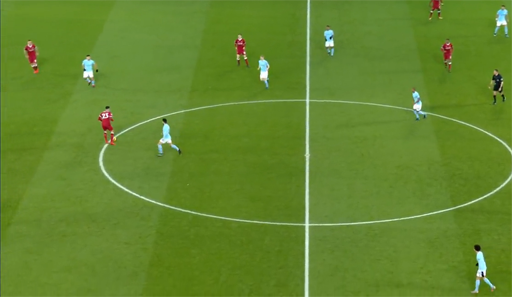
The defense plays a 3 v 3 duel on the ball and a 1 v 1 in the weak area.
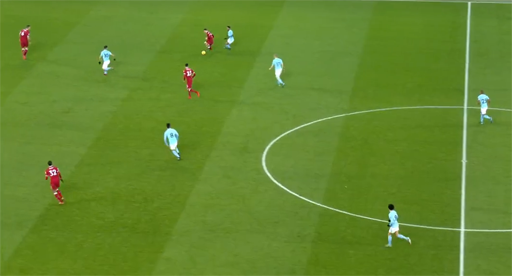
The defense plays a 1 v 1 duel on the ball and a general 5 v 5 duel as well.
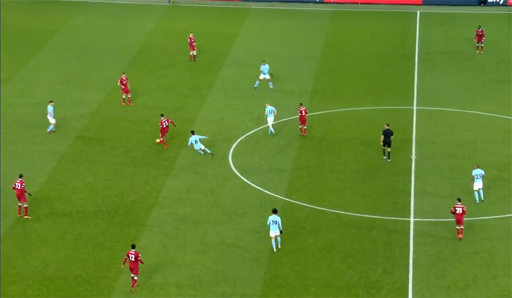
Play an immediate 1 v 1 against the opposition midfielder if the first line of defense pressure is passed.
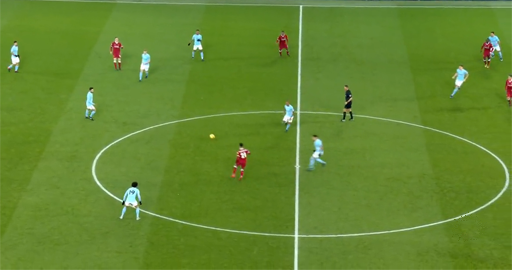
How to coach it:
Multiple 1 v 1 inside a 4 v 4 multi direction duel
Four forwards are placed on the corners of a rectangular pitch and four defenders outside the same corners 2-3 yards from and behind the forwards. Four mini goals are placed out of the main playing area and along the side of the rectangle. The coach is in possession of the ball.
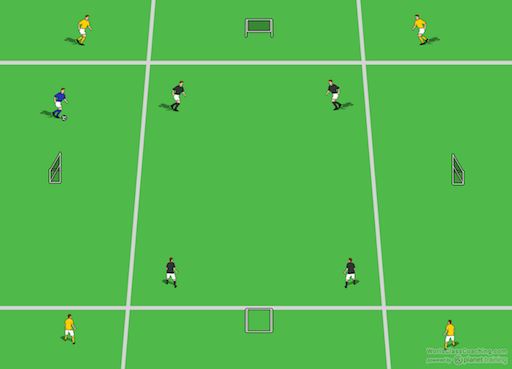
The coach passes the ball toward one of the forwards and a multiple 1 v 1 is now played; 1 v 1 with the defenders at the back along the side where the ball is received and 1 v 1 duels to anticipate the forwards on the opposite side.
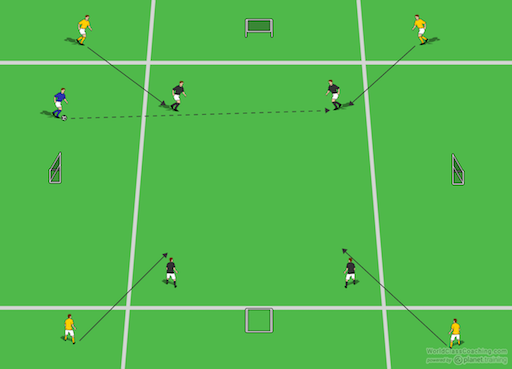
The forwards must try to score in one the side mini goal related to the first player who received the pass from the goalkeeper; the scorer must receive a pass over the end line and behind the defender.
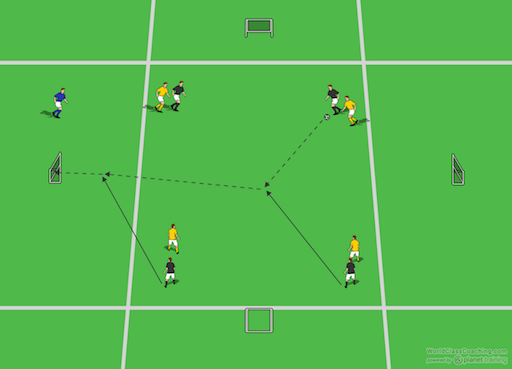
If the defenders win the ball they can play freely to score, but in one the mini goals placed out of the upper or lower side of the pitch.
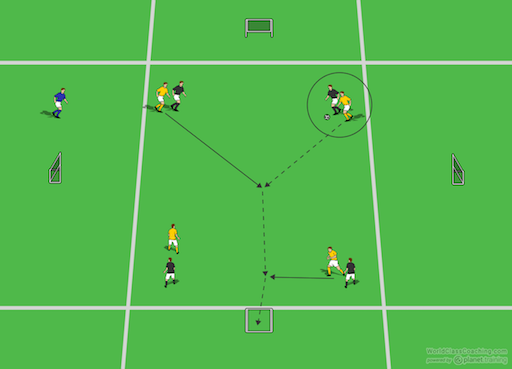
Coaching Points:
• Press the opponents while receiving the pass
• Close the space between the opponents and the goal
• Anticipate the opponent
• If possession is lost, mark the player to avoid counter attack


